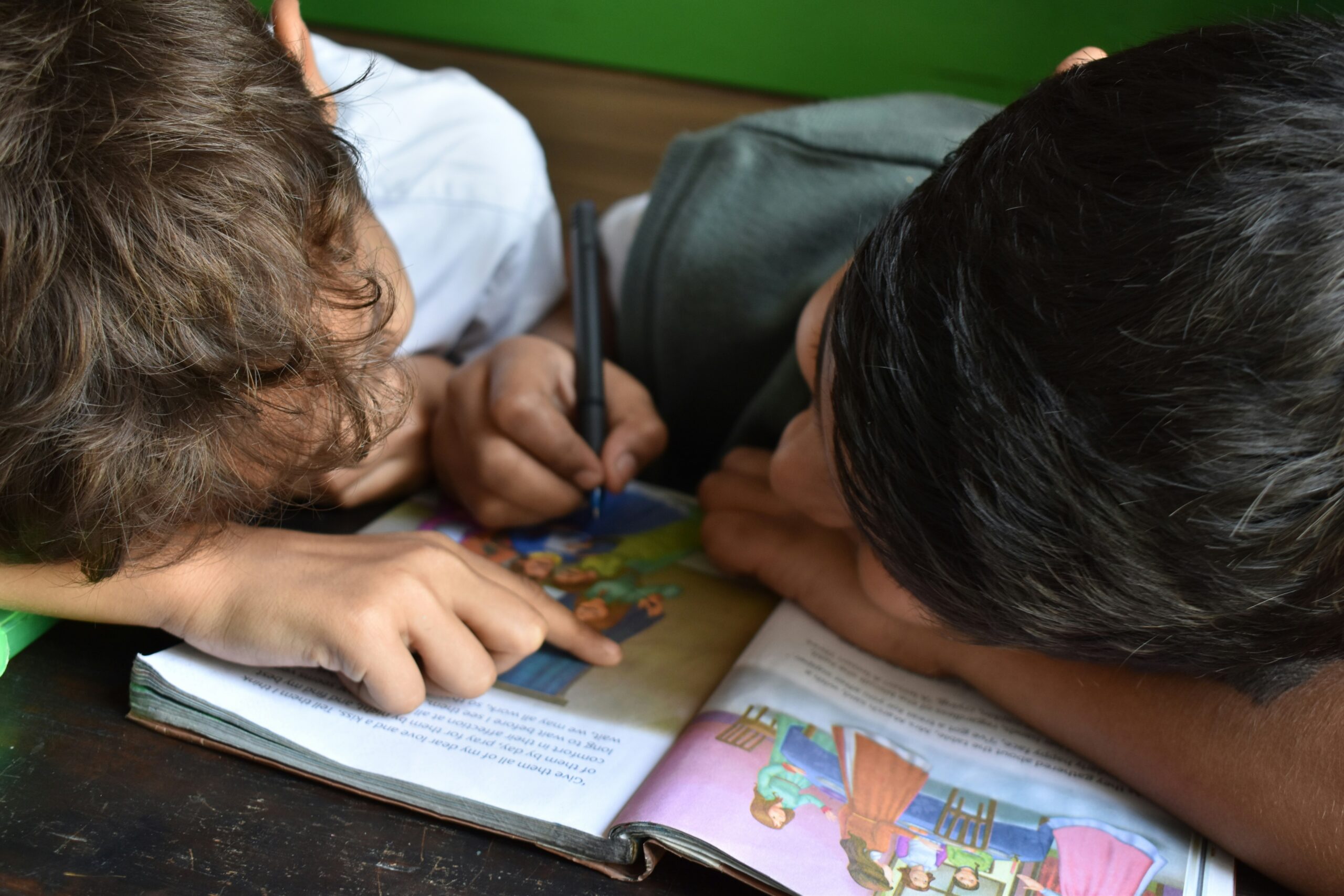Blog
Government-led reforms: How can we support the ‘missing middle’ to scale reading instruction?
Clio Dintilhac, Michelle Kaffenberger and Yue-Yi Hwa
Recent upheaval in USAID funding reminds us that governments cannot sustainably rely on aid-supported external systems to drive improvement. Instead, it is crucial to rely on the state bureaucracy, especially the levels closest to the school, as the key driver of instructional improvement.
However, the essential role of mid-tier bureaucracy is not reflected in the levels of evidence currently available:
- We know what ‘good’ looks like in the classroom, at least for teaching reading and foundational numeracy.
- We have decent evidence on what good coaching looks like to support teachers to adopt effective practices.
- However, we have very little evidence on what is needed one level up from the coaches who work directly with schools. What are the key actions that need to happen at the district or subdistrict level to ensure teachers, coaches and headteachers are supported?
We also have similarly little evidence on the interventions that work to support the middle tier of the bureaucracy. This is an essential issue because districts and subdistricts, especially the ‘mid-tier managers’ in these jurisdictions, are vital for sustaining and scaling effective reading and mathematics practices in the government system.
Where do mid-tier managers fit in?
In any education system, there are many actors who operate between high-level policymakers and school-level teachers, headteachers and principals. In the middle are regional, state, district and subdistrict actors who bridge high-level policy with school-level action.
Of these roles, mid-tier managers are a critical group. Typically, mid-tier managers are based at the district or subdistrict level. Given that the job titles of those holding these roles vary a lot across education systems, we use the term ‘mid-tier managers’ to refer to the layer of bureaucrats who manage those providing school-facing instructional support.
A key role that mid-tier managers play is supervising and supporting school-facing coaches or supervisors, who in turn work directly with teachers and headteachers. Evidence shows that coaches are an effective pathway for instructional support. Coaches have played a key role in many of the programmes that have improved children’s foundational literacy and numeracy at scale. Randomised controlled trials have also shown that coaching can have twice the impact on children’s learning compared to centralised teacher training.
But coaches in turn need support and supervision, oriented towards improving instructional quality, from the mid-tier managers above them. Through this support, mid-tier managers can act as a force multiplier further up the chain of implementation for improving children’s foundational learning.
What we know …
Thus far, there has been limited research on the role of middle-tier actors in Global South education systems. This contrasts with an established body of research on the role of school districts in the Global North. Moreover, existing research on subnational education officials in the Global South has paid much more attention to their administrative roles than to their roles in supervising and supporting improvements in instructional quality.
There is evidence that effective foundational learning programmes vary greatly in their impacts. A recent study found that different structured pedagogy programmes can have widely differing effects on children’s learning. Another analysis of four structured pedagogy programmes found wide variation between schools in each programme, with 80% of the impact on children’s learning coming from 13 to 34% of schools.
We hypothesise that part of this variation is due to how well the programme was implemented, and in turn hypothesise that mid-tier managers can be pivotal to supporting more consistent implementation and thus more impact. For instance, a study of management practices among district education officers in Tanzania found that the frequency of school visits, school and teacher incentives administered by the district manager and performance reviews of staff were all associated with better district-level exam results.
Some studies have suggested mechanisms for improving mid-tier managers’ effectiveness:
- Social network analysis and the study of bureaucratic norms indicates that mid-tier managers’ effectiveness depends on their relationships with coaches, headteachers, teachers and other actors.
- Small-scale studies across a range of Global South contexts have tested interventions that can influence coaches’ practices. These include capacity-building workshops to help school inspectors shift from a hierarchical, evaluative mode to a collegial, improvement-oriented mode in the Gambia.
- In other parts of the public sector, experimental evaluations have found positive effects from a range of supports for mid-tier managers, such as a smartphone app that improved the flow of information between mid-tier managers and health inspectors in Pakistan.
… and what we don’t know
There remain significant gaps in our understanding of the key components that are needed to support effective instruction, and of the role that mid-tier managers can play in such support. Key areas for advancement include:
1. Understanding mid-tier managers’ current practices and constraints
We don’t know enough about what mid-tier managers are currently doing. We also don’t typically know how many mid-tier managers there are in a given context, or how they are distributed between administrative levels. Better understanding the daily practices and constraints of mid-tier managers is essential for designing models of instructional improvement that will be feasible with minimal extra costs. Therefore, there is a need for descriptive work on the composition and distribution of mid-tier managers, coaches and other middle tier actors in different contexts as well as studies documenting their de jure and de facto time use.
2. Understanding what activities and practices are most useful and efficient for mid-tier managers to support improved instruction.
This could include iteratively testing different approaches for mid-tier managers supporting coaches; learning from existing examples of effective practice (eg positive deviant practices); and more. Further work is needed to understand the minimum set of activities that need to be performed in order to sustain and scale good instruction in the government system. For example, a study on the core functions of effective education systems proposes that setting expectations about educational outcomes, monitoring schools’ performance, and supporting schools to meet the outcomes are crucial. At the district level, there are often significant challenges in monitoring – ie collecting the right data – and support – ie acting on that data to improve performance. National information management systems are usually not set up to provide answers to key questions for teaching and learning at an actionable level of granularity, such as: Which schools perform better in a district? Which ones are lagging, and why? Which teachers are teaching effectively?
There are different ways to collect, synthesise, and drive change using such data on school and teacher performance, such as formative tests administered by teachers or dipstick assessments administered by coaches during classroom observations. Each approach has its own strengths and weaknesses, and more research is needed to pinpoint which sets of trade-offs are best suited to different contextual conditions.
3. Understanding how to generate these changes, including what mix of interventions enable these changes.
Open questions include:
- What is the mix of tools, training, change management, incentives and funding to key budget lines (eg transportation costs) that is needed to get to instructionally focused changes in the middle tier? What policy and implementation reforms are needed to make these changes happen in the government system?
- How can education systems facilitate changes in mindsets at scale, away from top-down compliance and toward professionalised, improvement-oriented norms?
- Given limited resources, how can all of this be implemented cost-effectively at scale?
Where we hope to get
We think a three-pronged approach can advance our collective knowledge on the role of mid-tier managers in policy and practice.
First, new research, along the lines of what we describe in the previous section, can shed additional light on both what mid-tier managers can and should do to support quality instruction and how to enable them to do so. This can include rapid, iterative approaches that inform quick programmatic improvements as well as contributing to the broader evidence base.
Second, technical convenings bringing together implementers, researchers and other collaborators can help ensure the education sector is gaining from individual and organisational knowledge and new research findings. The Gates Foundation and the What Works Hub for Global Education co-convened a workshop on middle tier actors in September 2024 and hope to hold more such events as more evidence becomes available.
Third, incorporating good practices into policy plans and practice by government actors and non-governmental organisations can lead to improved practice and continual lesson-learning. Capturing lessons learned from implementation can help to elicit and codify the tacit knowledge of implementers and let others learn from their experience.
We can’t do all this ourselves and hope this blog is a call to action for others to also (continue) pursuing these areas of research and practice. The ambition is that mid-tier managers will no longer be the ‘missing middle’ in education research and policy implementation in the global south. Rather, they will be the indispensable core holding together foundational learning reforms for all children.
Dintilhac, C., Kaffenberger, M. & Hwa, YY. 2025. Government-led reforms: How can we support the ‘missing middle’ to scale reading instruction? What Works Hub for Global Education. Blog. 2025/004. https://doi.org/10.35489/BSG-WhatWorksHubforGlobalEducation-BL_2025/004
Discover more

What we do
Our work will directly affect up to 3 million children, and reach up to 17 million more through its influence.

Who we are
A group of strategic partners, consortium partners, researchers, policymakers, practitioners and professionals working together.

Get involved
Share our goal of literacy, numeracy and other key skills for all children? Follow us, work with us or join us at an event.


